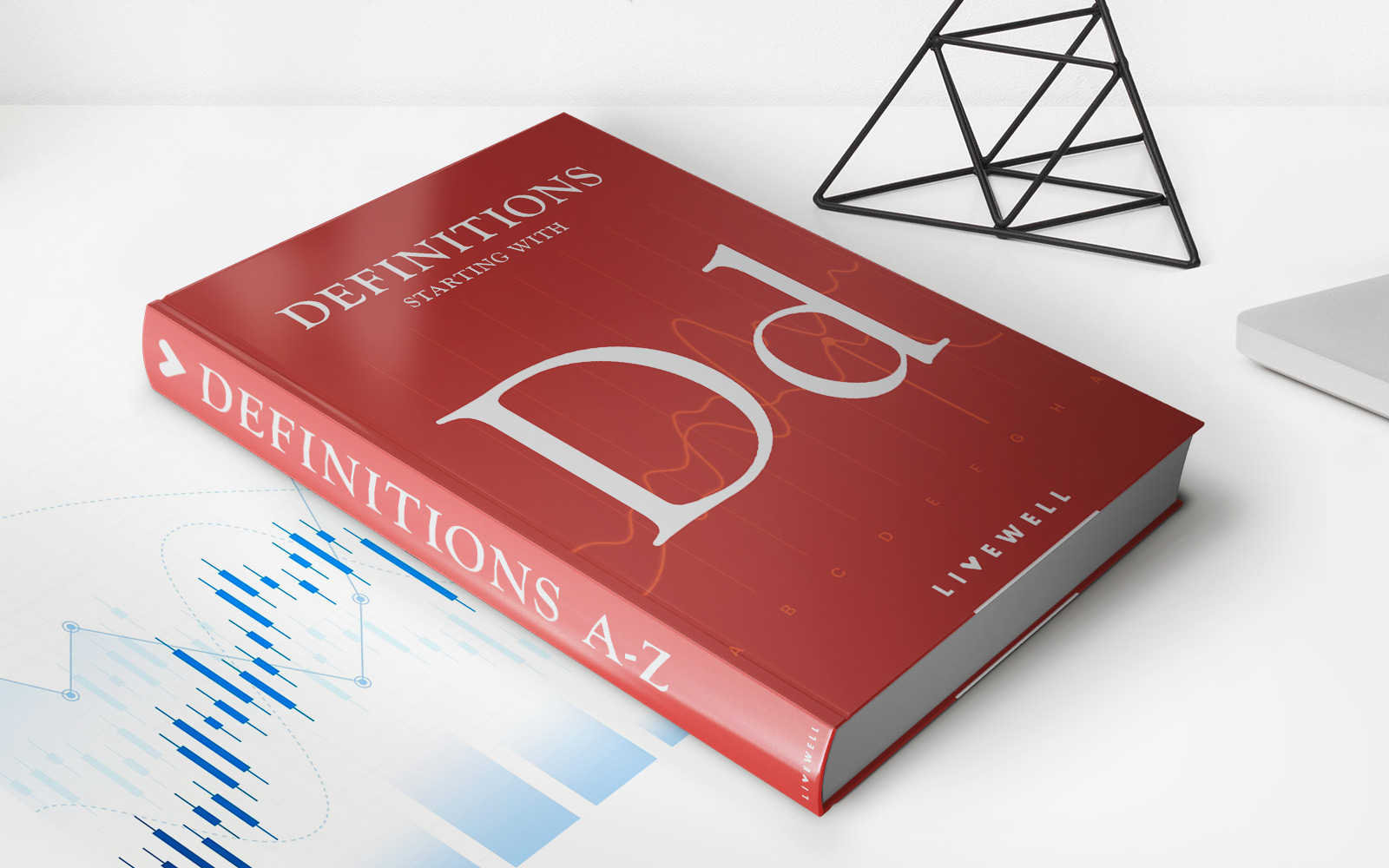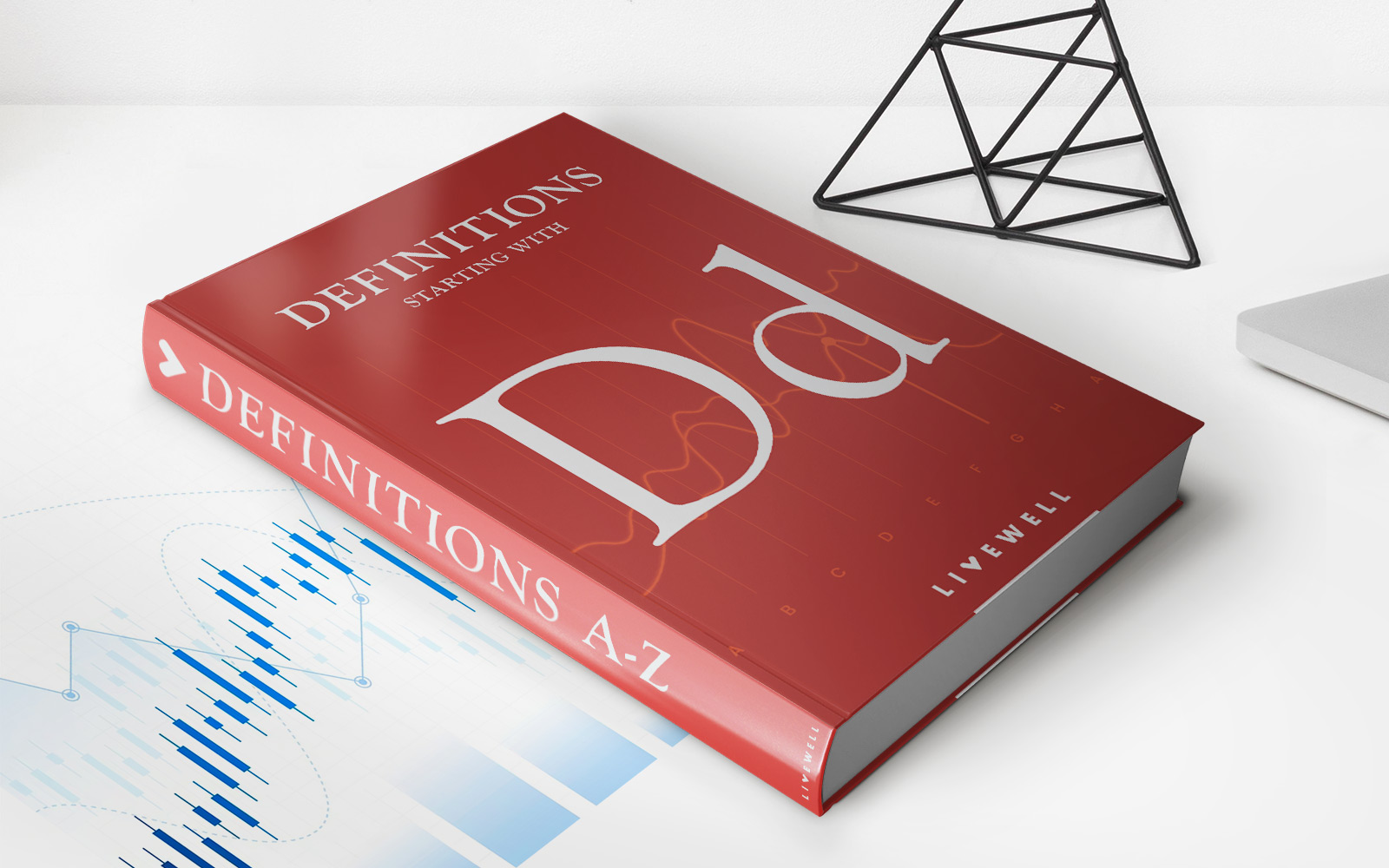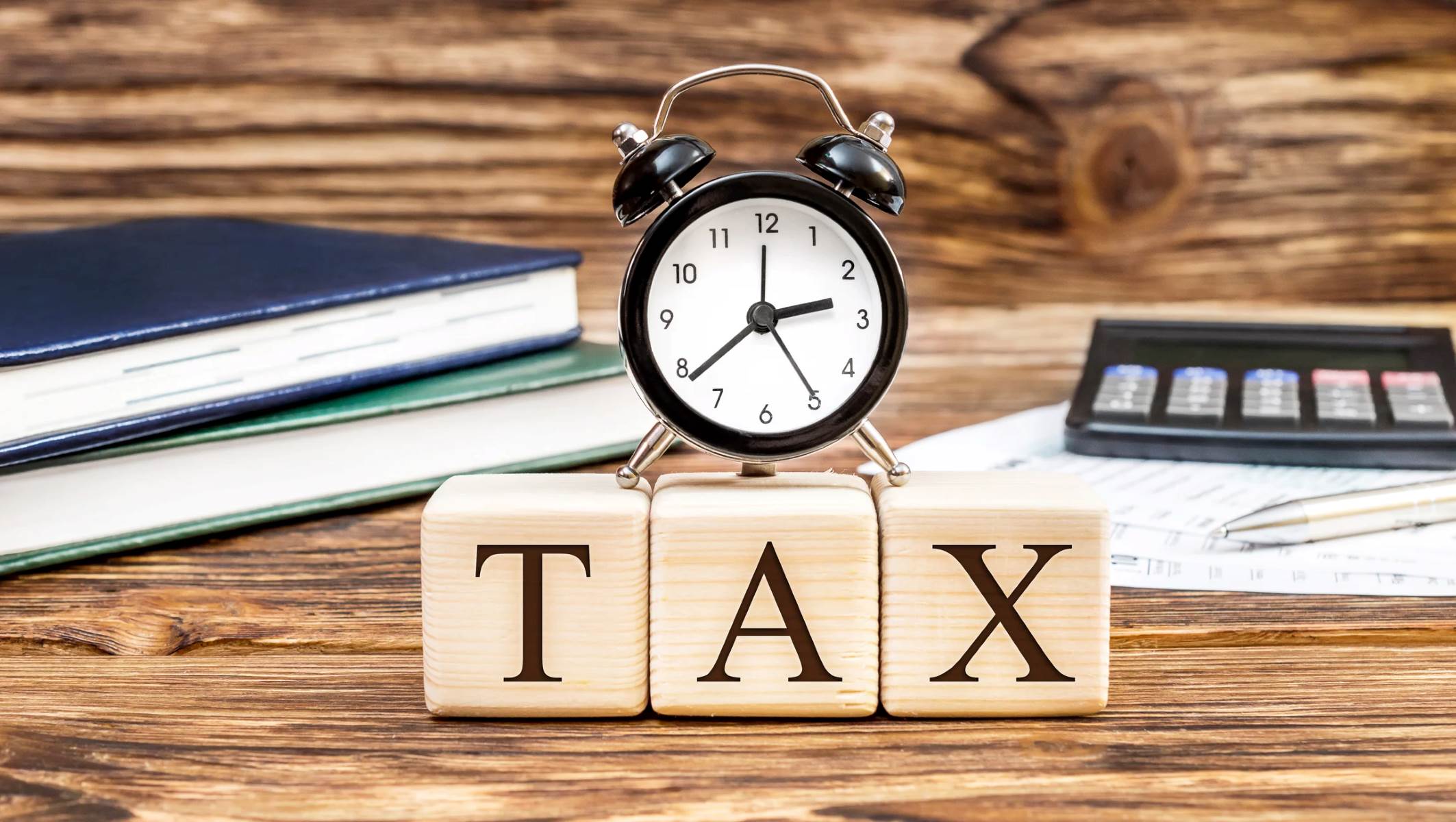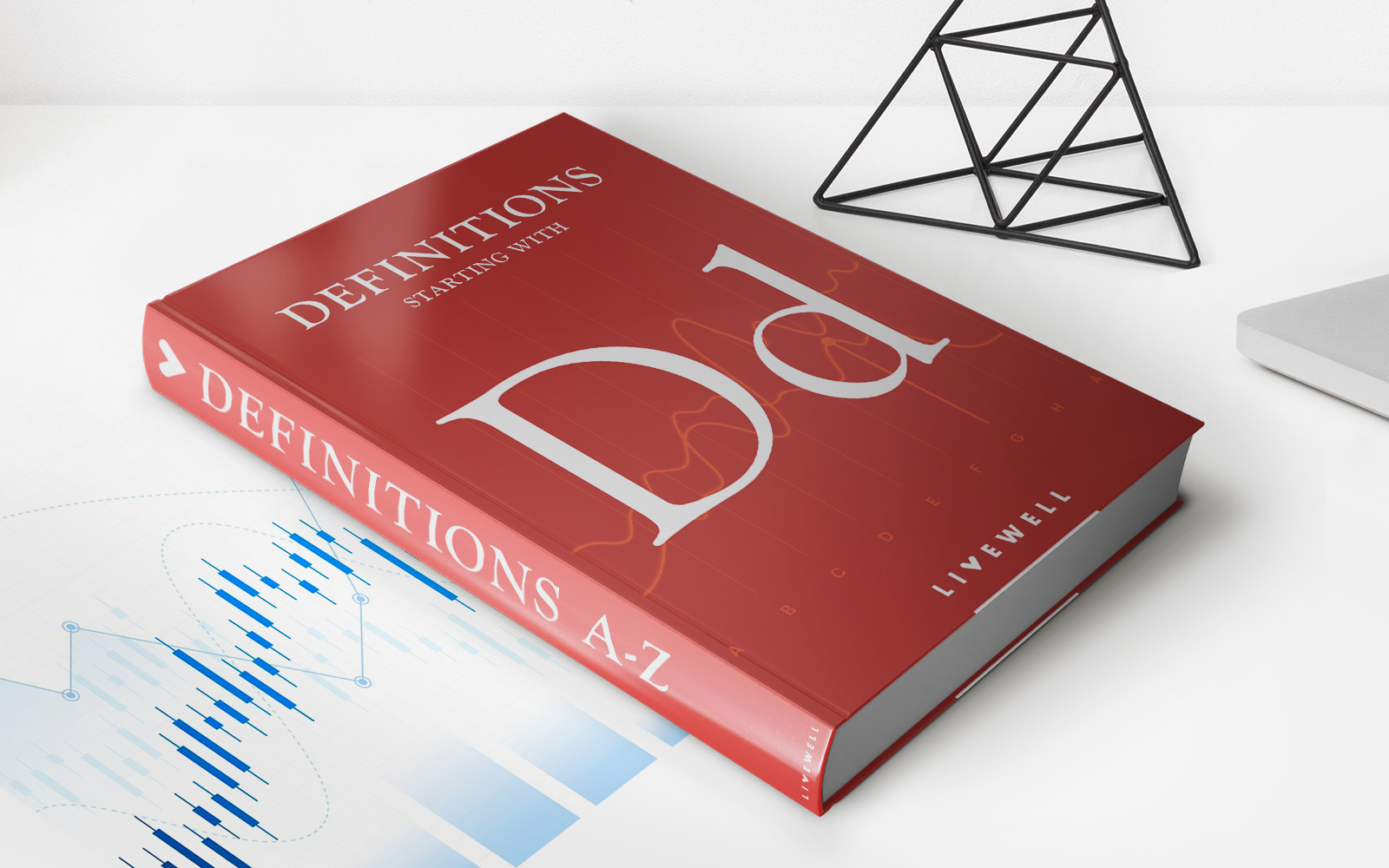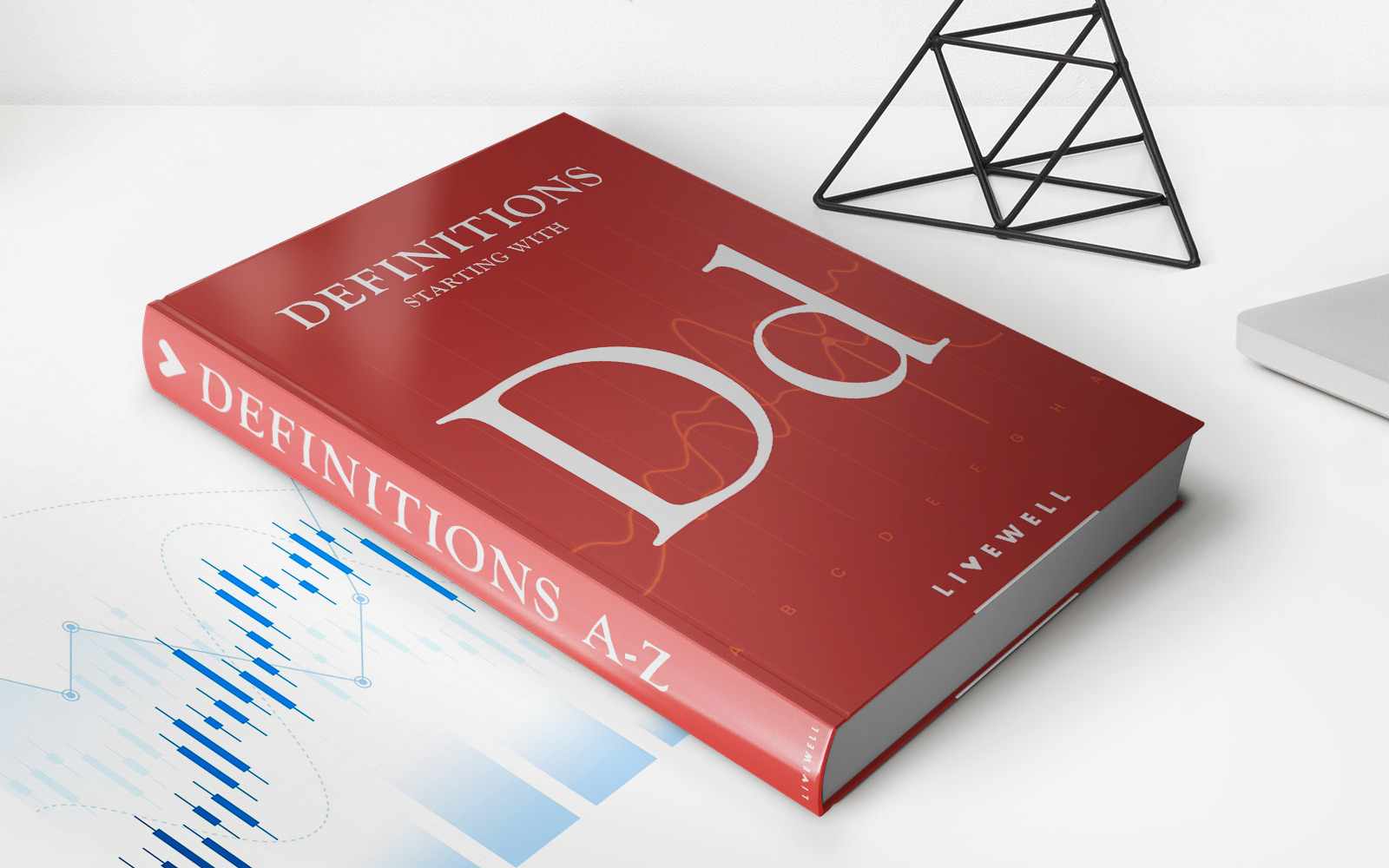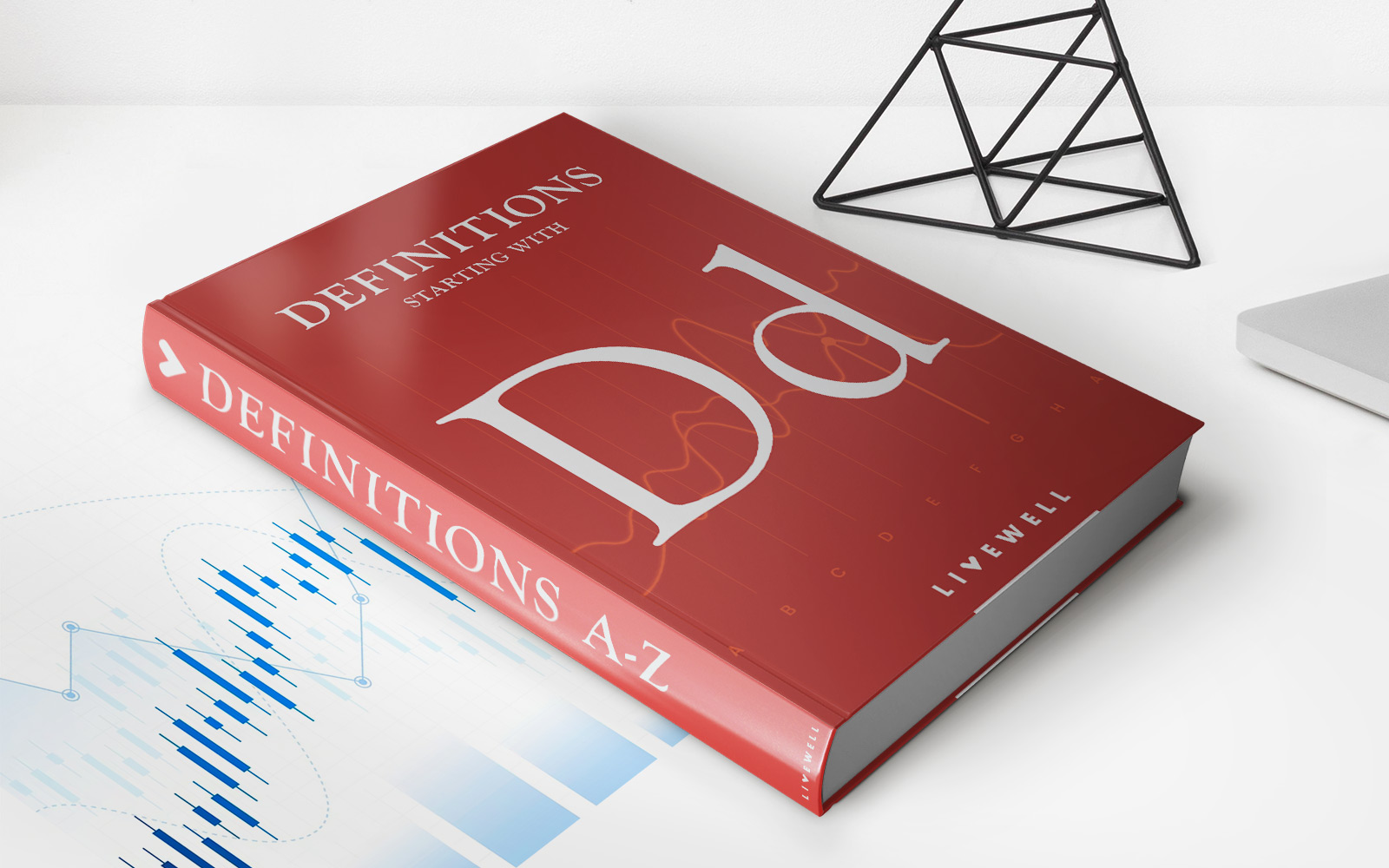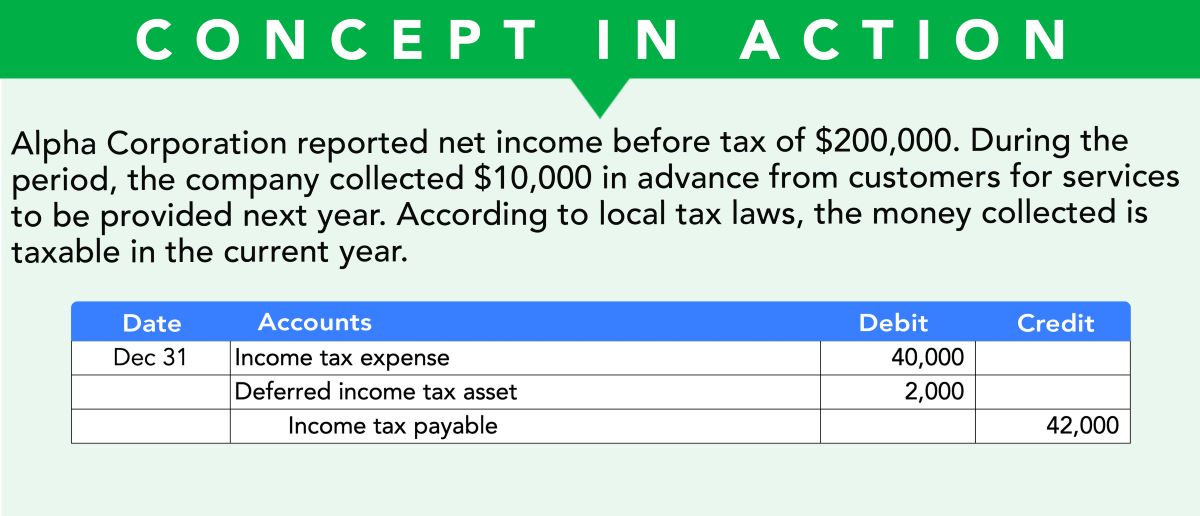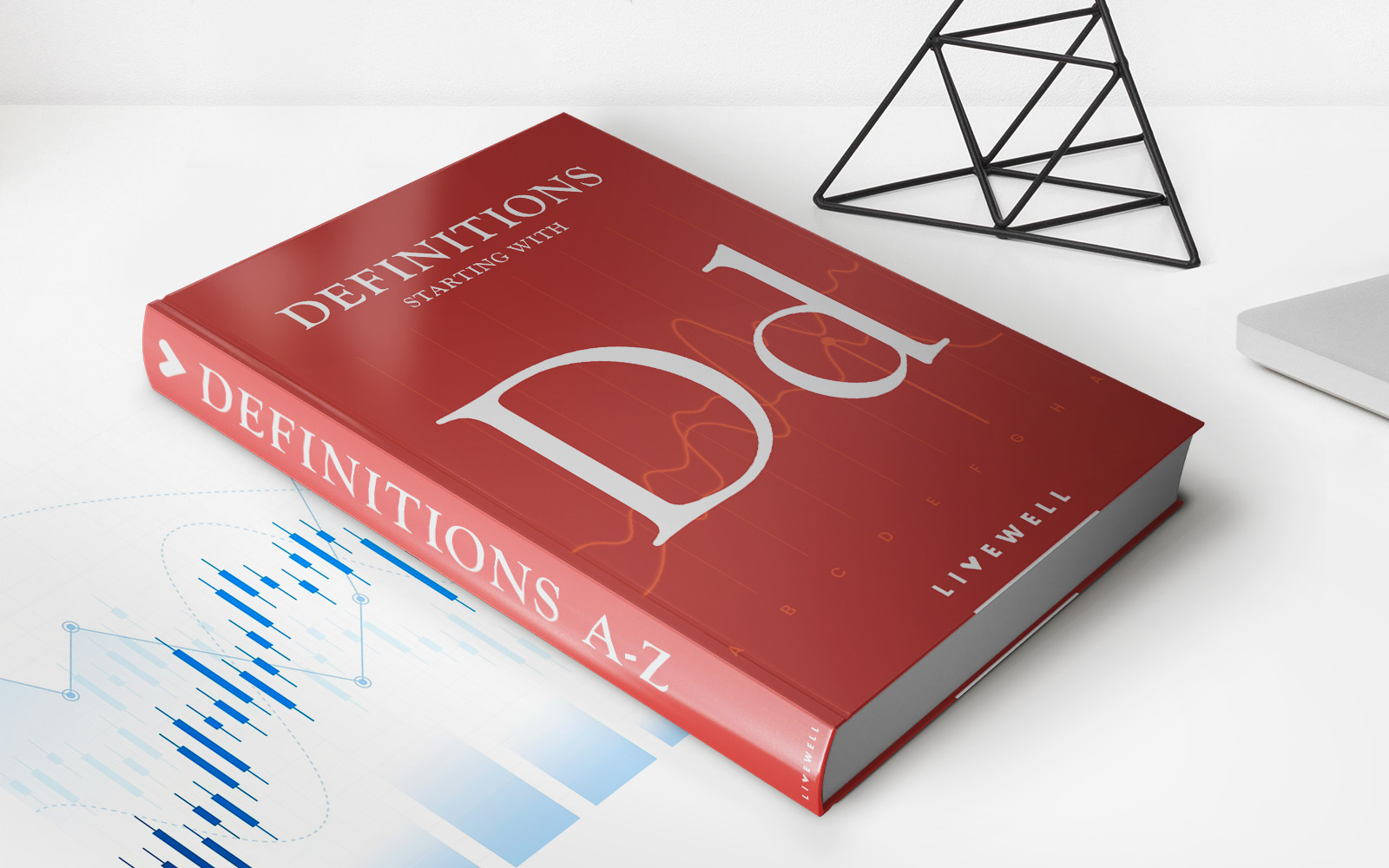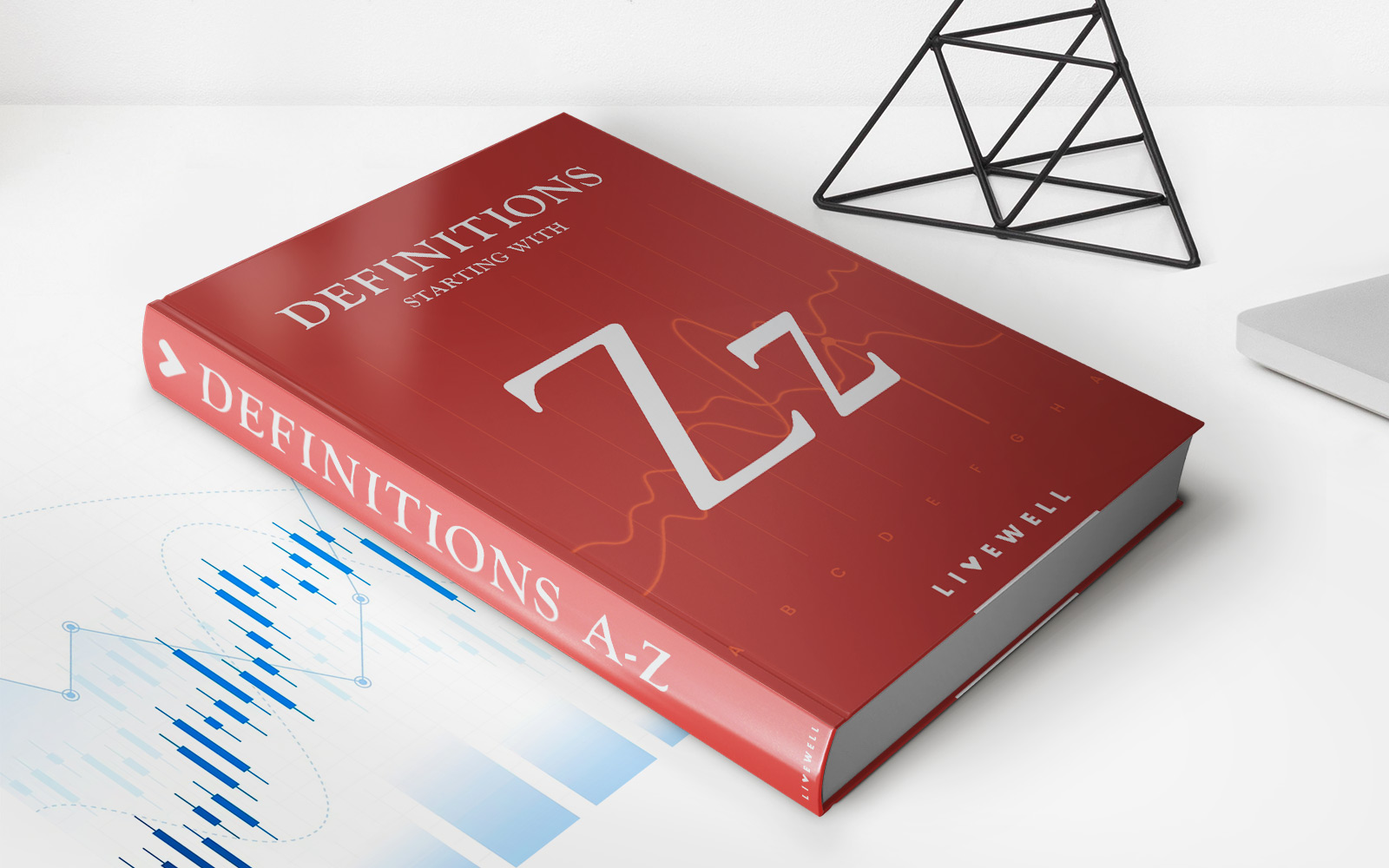

Finance
What Is Deferred Pension
Published: November 27, 2023
Learn about deferred pension and how it can impact your finances. Discover the benefits and considerations of this financial arrangement.
(Many of the links in this article redirect to a specific reviewed product. Your purchase of these products through affiliate links helps to generate commission for LiveWell, at no extra cost. Learn more)
Table of Contents
- Introduction
- Definition of Deferred Pension
- How Does Deferred Pension Work?
- Benefits of Deferred Pension
- Eligibility for Deferred Pension
- Factors to Consider Before Choosing Deferred Pension
- Tax Implications of Deferred Pension
- Drawbacks of Deferred Pension
- Comparison with Other Retirement Options
- Conclusion
Introduction
In the realm of retirement planning, there are various options available to individuals to secure their financial future. One such option is deferred pension. If you’re unfamiliar with the term, deferred pension refers to a retirement benefit that is earned during an individual’s working years but is not immediately paid out. Instead, it is deferred to a future date.
Deferred pension plans are commonly offered by employers as a way to provide their employees with a retirement income stream after they stop working. This type of pension arrangement allows individuals to accumulate funds over a certain period of time, ensuring a steady income during their retirement years.
While the concept of deferred pension may seem straightforward, it’s important to understand the intricacies and benefits of this retirement option. In this article, we will delve into the definition of deferred pension, how it works, the eligibility requirements, tax implications, and other factors to consider before choosing this retirement option.
Whether you’re nearing retirement age or just starting your career, understanding deferred pension is crucial in making informed decisions about your financial future. So, let’s dive into the details and explore what deferred pension is all about.
Definition of Deferred Pension
Deferred pension is a retirement benefit that is earned by an individual during their working years but is not immediately paid out. Instead, it is deferred or postponed to a future date when the individual has reached the eligibility criteria for receiving the pension. Essentially, it is a form of delayed payment for work performed.
Deferred pension plans are commonly offered by employers as part of their employee benefits package. These plans allow employees to accumulate funds over a specified period of time, typically through regular contributions from their earnings or a combination of employer and employee contributions. The accumulated funds are then invested, typically in pension funds or other investment vehicles, to grow over time and provide a retirement income.
It’s important to note that deferred pension plans are distinct from immediate annuities or other retirement savings vehicles. With a deferred pension, there is a waiting period before the payments begin. This waiting period allows individuals to plan for their retirement and make necessary arrangements, such as choosing a retirement date or exploring other sources of income to bridge the gap until the deferred pension payments commence.
The exact mechanics and rules of deferred pension plans can vary depending on the specific plan and the jurisdiction in which it is offered. Some plans may have a fixed retirement age at which the pension payments start, while others may offer flexibility in choosing the retirement age within specific limits. Additionally, the amount of the pension payments is typically based on factors such as the individual’s years of service, salary, and the formula used to calculate the pension benefit.
While deferred pension plans are primarily associated with employer-sponsored retirement benefits, some individuals may also choose to create their own deferred pension plans through personal savings or investments. These individual plans allow for more flexibility and control over the retirement savings, but they also come with additional responsibilities and risks.
Overall, the essence of deferred pension is to provide individuals with a reliable income stream during their retirement years, ensuring financial stability and peace of mind. By deferring the payment of the pension, individuals have the opportunity to accumulate funds and potentially benefit from investment growth, resulting in a greater retirement income compared to an immediate payout arrangement.
How Does Deferred Pension Work?
Deferred pension plans operate on the principle of accumulating funds over a specific period of time to provide a retirement income. Let’s break down how these plans work:
- Accumulation Phase: During the accumulation phase, the individual or their employer makes regular contributions to the deferred pension plan. These contributions are invested in various instruments such as stocks, bonds, and other assets with the goal of growing the pension fund over time. The accumulated funds benefit from compound interest and investment returns.
- Deferred Period: The deferred period is the waiting period that individuals must go through before they can start receiving their pension payments. This period can range from a few years to several decades, depending on the rules of the pension plan and the individual’s chosen retirement age.
- Retirement Age: Once the individual reaches the specified retirement age or the eligible age for pension payments according to the plan’s rules, they become eligible to start receiving their deferred pension. This is the point at which the accumulation phase ends, and the distribution phase begins.
- Pension Payments: Once the individual has reached the retirement age or chosen the retirement date, they can choose to receive their deferred pension in various forms. The most common options are a lump sum payment, regular monthly payments, or a combination of both. The amount of the pension payments is typically determined by factors such as the individual’s contributions, years of service, salary, and the formula used by the pension plan to calculate the benefits.
- Pension Options: Depending on the terms of the deferred pension plan, individuals may have the option to choose different payment structures. For example, they may opt for a higher monthly payment with no residual benefits or a lower monthly payment with residual benefits that can be passed on to a spouse or beneficiaries in the event of their death.
It’s important to note that the deferred pension plan may have specific rules regarding the withdrawal of funds before the retirement age or early termination of the plan. Individuals should familiarize themselves with these rules before making any decisions regarding their deferred pension plan.
In summary, deferred pension plans work by accumulating funds over a specific period of time through regular contributions and investments. The accumulated funds are then used to provide a retirement income once the individual reaches the eligible age for pension payments. By allowing the funds to grow over time, deferred pension plans can provide individuals with a substantial retirement income to support their financial needs in retirement.
Benefits of Deferred Pension
Deferred pension offers several advantages that make it an attractive retirement option for individuals. Here are some key benefits of having a deferred pension plan:
- Long-Term Savings: By contributing to a deferred pension plan over an extended period of time, individuals have the opportunity to accumulate substantial savings for their retirement. The compounding effect of investment returns can significantly increase the size of the pension fund, providing a secure source of income in later years.
- Income Stream: Deferred pension plans provide individuals with a steady income stream during their retirement years. This regular pension payment can help cover expenses, maintain a comfortable lifestyle, and provide financial security throughout retirement.
- Employer Contributions: In many cases, employers contribute to the deferred pension plan along with the individual’s own contributions. This employer contribution can boost the retirement savings significantly and lighten the financial burden on the individual.
- Tax Advantages: Contributions made to a deferred pension plan are often tax-deductible, reducing the individual’s taxable income in the present. Additionally, the earnings on the contributions are tax-deferred until the pension payments are received, allowing for potential tax savings and increased investment growth.
- Flexibility and Control: Deferred pension plans typically offer flexibility in choosing the retirement age within certain limits. This allows individuals to adjust their retirement plans based on their personal circumstances and financial goals. Furthermore, some deferred pension plans offer payment options, such as a lump sum or monthly payments, giving individuals the freedom to choose the most suitable method for their retirement income needs.
- Protection Against Market Fluctuations: Deferred pension plans are often invested in well-diversified portfolios, which can help mitigate the impact of market volatility. By having a diversified investment strategy overseen by professionals, individuals can be better protected against potential market downturns and ensure the longevity of their retirement funds.
- Financial Security: Having a deferred pension plan provides individuals with a sense of financial security in retirement. Knowing that there is a reliable income stream in place can alleviate worries about running out of money and allow individuals to enjoy their retirement years with peace of mind.
Overall, deferred pension plans offer individuals a range of benefits, including long-term savings, a reliable income stream, employer contributions, tax advantages, flexibility, and financial security. These advantages make deferred pension an appealing choice for individuals who seek a stable and comfortable retirement.
Eligibility for Deferred Pension
To be eligible for a deferred pension, individuals need to meet certain criteria set by the pension plan or their employer. While the specific eligibility requirements may vary, here are some common factors that determine eligibility for a deferred pension:
- Service Requirement: Most deferred pension plans require a minimum number of years of service or employment with the company or organization. This is commonly referred to as the vesting period. The purpose of the service requirement is to ensure that the individual has made a significant contribution to the organization before becoming eligible for the pension benefit.
- Age Requirement: Deferred pension plans typically have a minimum retirement age, which is the age at which individuals become eligible to start receiving their pension payments. The retirement age can vary depending on the pension plan and may be set by the employer or governed by legal regulations.
- Termination of Employment: In some cases, individuals may need to have terminated their employment with the company or organization to become eligible for a deferred pension. This may be applicable for employees who have retired or left the job but have accumulated pension benefits during their tenure.
- Continuous Employment: Some deferred pension plans require individuals to have had continuous employment with the employer until reaching the retirement age. This means that any gaps in employment or breaks in service may affect the eligibility for the pension benefit.
- Contributions: In order to be eligible for a deferred pension, individuals typically need to have made contributions to the pension plan during their employment. These contributions can be deducted from the individual’s salary or may be made by the employer on the individual’s behalf.
It’s important to carefully review the eligibility requirements for a specific deferred pension plan to ensure compliance and avoid any surprises or misunderstandings. Employers or plan administrators can provide detailed information regarding the eligibility criteria and the process for applying for a deferred pension.
Furthermore, it’s worth noting that eligibility for a deferred pension does not necessarily guarantee the receipt of the full pension benefit. The amount of the benefit payment may depend on factors such as the individual’s years of service, average salary, and the pension formula utilized by the plan. Understanding these factors and how they impact the pension benefit is essential in preparing for retirement.
Overall, meeting the eligibility criteria for a deferred pension is a significant milestone that marks the beginning of a secure and fulfilling retirement. By understanding the requirements and planning accordingly, individuals can ensure that they maximize their pension benefits and enjoy a stable income during their golden years.
Factors to Consider Before Choosing Deferred Pension
Before deciding to opt for a deferred pension plan, it’s important to carefully evaluate various factors to ensure that it aligns with your financial goals and retirement needs. Here are some key factors to consider:
- Long-Term Financial Goals: Assess your long-term financial goals and determine if a deferred pension plan fits into your overall retirement strategy. Consider factors such as the desired retirement age, lifestyle expectations, and other sources of retirement income.
- Employer Plan: Understand the specifics of your employer’s deferred pension plan, including the vesting period, contribution options, investment choices, and benefit calculation formula. It’s also crucial to be aware of any limitations or restrictions associated with the plan.
- Investment Risk: Evaluate the investment risk associated with the deferred pension plan. Understand how the funds are invested and the potential for returns. If you are risk-averse, you may prefer a plan with more conservative investment options.
- Flexibility: Consider the flexibility offered by the deferred pension plan. Some plans allow for early retirement with reduced benefits, while others offer the option to delay retirement and increase the pension payout. Assess your desired level of flexibility and choose a plan that aligns with your preferences.
- Tax Considerations: Understand the tax implications of a deferred pension plan. Contributions to the plan may be tax-deductible, but the pension payments received during retirement are typically subject to income tax. Consult with a tax professional to fully comprehend the tax implications of the plan.
- Other Retirement Options: Evaluate other retirement options, such as individual retirement accounts (IRAs) or employer-sponsored 401(k) plans, and compare them to the deferred pension plan. Assess the benefits, risks, and potential returns of each option to make an informed decision.
- Life Expectancy: Consider your life expectancy and the longevity of the deferred pension plan. Assess whether the projected pension payments will sustain your financial needs throughout your retirement years.
- Financial Stability of the Employer: Consider the financial stability of your employer. If the company or organization sponsoring the deferred pension plan faces financial challenges, it may impact the security of your pension benefits. Research the financial strength and reputation of your employer before committing to the plan.
It is advisable to consult with a financial advisor or retirement planner who can provide personalized guidance based on your specific financial situation and retirement goals. They can help you assess the various factors and make an informed decision regarding the suitability of a deferred pension plan for your needs.
Remember, choosing a deferred pension plan is a long-term commitment that will impact your financial well-being during retirement. Taking the time to carefully consider these factors will help you make the right choice and secure a comfortable future.
Tax Implications of Deferred Pension
Understanding the tax implications of a deferred pension plan is crucial when planning for your retirement. Here are some key considerations regarding the tax treatment of a deferred pension:
- Tax-deferred Contributions: Contributions made to a deferred pension plan are generally tax-deductible in the year they are made. This means that the amount contributed reduces your taxable income for that year, potentially lowering your overall tax liability.
- Tax on Pension Payments: When you start receiving pension payments from a deferred pension plan, they are generally treated as taxable income. The amount of the pension payment is subject to income tax at your marginal tax rate for the year in which you receive the payment.
- Tax-free Lump Sum: In some cases, deferred pension plans allow individuals to receive a portion of their pension benefit as a tax-free lump sum. The specific rules governing the tax-free lump sum portion may vary depending on the jurisdiction and the pension plan.
- Minimum Distribution Requirements: In certain jurisdictions, including the United States, there are minimum distribution requirements for pension plans once the individual reaches a certain age (e.g., 72 in the U.S.). Failure to withdraw the required minimum distribution may result in penalties or additional tax liability.
- Taxation of Investment Returns: In a deferred pension plan, the contributions made are usually invested to generate returns over time. These returns, such as dividends, interest, or capital gains, are typically tax-deferred until they are withdrawn as part of the pension payments.
- Spousal Benefits: In the case of a deferred pension plan that offers spousal benefits, it’s important to understand the tax implications for the spouse. Depending on the jurisdiction and the specific structure of the plan, spousal benefits may have different tax treatment.
- Rollover Options: When transitioning from one job to another, individuals may have the option to rollover their deferred pension funds into another retirement account, such as an individual retirement account (IRA) or another employer-sponsored retirement plan. It’s essential to understand the tax implications and eligibility criteria associated with the rollover option.
- International Tax Considerations: If you are an international worker or planning to retire abroad, it’s crucial to understand the tax implications of your deferred pension plan in both your home country and the country where you plan to retire. Tax treaties and international tax laws may impact the taxation of your pension benefits.
Given the complexity of tax regulations, it is strongly recommended to consult with a tax professional or financial advisor who can provide guidance specific to your situation. They can help you understand the tax implications of a deferred pension plan, maximize tax advantages, and ensure compliance with the tax laws in your jurisdiction.
By being well-informed about the tax implications of a deferred pension plan, you can make informed decisions about your retirement savings, optimize your tax efficiency, and plan for a financially secure retirement.
Drawbacks of Deferred Pension
While deferred pension plans offer many advantages, it’s important to consider the potential drawbacks before committing to this retirement option. Here are some common drawbacks associated with deferred pension plans:
- Limited Access to Funds: With a deferred pension plan, the funds are generally inaccessible until the individual reaches the retirement age or becomes eligible for pension payments. This lack of liquidity can be a significant drawback if you need funds for emergencies or unexpected expenses before retirement.
- Market Volatility: The performance of a deferred pension plan is subject to market fluctuations. If there is a significant downturn in the market close to your retirement age, the value of your pension fund may be negatively affected. This risk can impact the overall size of your pension payments.
- Loss of Control: When participating in a deferred pension plan, you are subject to the rules and decisions made by the plan administrator and investment managers. This means that you have limited control over how the funds are invested and the investment strategies employed.
- Supplementary Income Needed: In some cases, the pension payments received from a deferred pension plan may not be sufficient to cover all of your retirement expenses, especially if you have high living costs or unexpected financial obligations. It’s important to consider other sources of income to supplement your pension payments.
- Dependency on Employer: If you have a deferred pension plan through your employer, your pension benefits may be tied to the financial stability and viability of the company. If the employer faces financial challenges or goes out of business, there could be a risk to your pension benefits.
- Impact of Inflation: Over time, the cost of living tends to rise due to inflation. If your deferred pension plan does not include cost-of-living adjustments (COLAs) or if the adjustments do not keep up with inflation, the purchasing power of your pension payments may diminish over the years.
- Changing Retirement Landscape: The retirement landscape is constantly evolving, and future changes in government regulations or the pension system itself could impact the benefits and structure of deferred pension plans. It’s important to stay informed about potential changes and adjust your retirement planning accordingly.
It’s crucial to carefully evaluate these drawbacks and assess how they align with your individual financial goals and retirement needs. Consider diversifying your retirement savings across multiple investment vehicles to mitigate the risks associated with a deferred pension plan and provide greater financial security in retirement.
Consulting with a financial advisor or retirement planner can provide valuable insights and help you make informed decisions regarding your retirement savings strategy. They can help you weigh the advantages and disadvantages of a deferred pension plan in the context of your unique financial situation and guide you toward making the best choices for your future.
Comparison with Other Retirement Options
When planning for retirement, it’s essential to consider the various retirement options available to you. Let’s compare deferred pension plans with other common retirement options to help you make an informed decision:
Social Security:
Social Security is a government-administered program that provides retirement income to eligible individuals. Unlike a deferred pension plan, Social Security is not tied to a specific employer or employment period. It offers a guaranteed income stream, adjusted for inflation, for as long as you live. However, Social Security benefits alone may not be sufficient to cover all your retirement expenses.
Individual Retirement Account (IRA):
IRAs are personal retirement savings accounts that offer tax advantages. Contributions to IRAs can be made by individuals, and they often provide a more significant degree of control and flexibility compared to deferred pension plans. However, the contribution limits are lower, and the responsibility of managing the investments falls on the individual.
Employer-sponsored 401(k) Plan:
401(k) plans are employer-sponsored retirement savings plans that allow employees to contribute a portion of their salary on a pre-tax basis. Employers may also match a portion of the employee’s contributions. Like deferred pension plans, 401(k) plans offer tax advantages and potential growth through investment options. However, 401(k) plans usually offer more flexibility in terms of accessing funds before retirement age.
Annuities:
Annuities are insurance contracts that provide a guaranteed income stream in retirement. Immediate annuities, in particular, start paying out immediately upon purchase. Deferred annuities, on the other hand, allow individuals to accumulate funds over time before converting into a stream of income. Annuities offer guaranteed payments, but they may come with higher fees and less control over investment decisions.
Personal Savings and Investments:
Personal savings and investments can involve various vehicles such as stocks, bonds, mutual funds, or real estate. This option provides individuals with the most flexibility and control over their funds. However, it also carries more risk and requires active management and financial planning to ensure sufficient retirement savings.
When comparing deferred pension plans with other retirement options, consider factors such as the level of control, tax advantages, employer contributions, access to funds, risk tolerance, and desired retirement lifestyle. It may be beneficial to utilize a combination of retirement options to diversify your income sources and mitigate risk.
Consulting with a financial advisor can help you assess your specific financial situation, goals, and risk tolerance. They will provide personalized guidance and create a retirement plan that maximizes the benefits of the available retirement options and gives you confidence in your financial future.
Conclusion
Choosing the right retirement option is a critical decision that can significantly impact your financial future. Deferred pension plans offer several benefits, such as long-term savings, a reliable income stream, employer contributions, and potential tax advantages. However, it’s important to consider the drawbacks, including limited access to funds and dependency on the employer’s financial stability.
When navigating the world of retirement planning, it’s crucial to evaluate the eligibility requirements, tax implications, and factors unique to your situation. Consider factors such as long-term financial goals, investment risk, flexibility, and other retirement options available to you, such as Social Security, IRAs, 401(k) plans, annuities, and personal savings and investments.
Consulting with financial professionals, including retirement planners and tax advisors, can provide valuable insights and guidance tailored to your specific needs. They can help you assess the advantages and disadvantages of a deferred pension plan within the context of your overall retirement strategy.
Remember that retirement planning is a comprehensive process that requires periodic review and adjustment as your circumstances change. Regularly review and update your retirement plan to ensure that it aligns with your evolving goals and provides the financial security you desire in your golden years.
Ultimately, careful consideration, informed decision-making, and a well-rounded retirement savings approach will pave the way for a comfortable and fulfilling retirement. Start planning today and take proactive steps towards securing a financially stable future.
